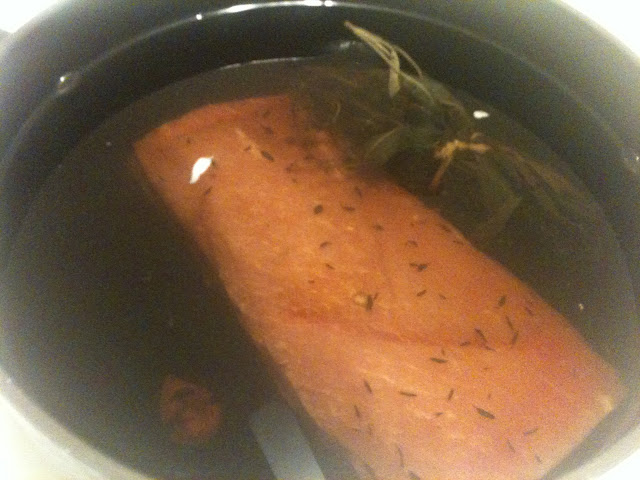 |
| Alright.. I feel like it's been a long time coming for a how-to on whole chickens, so here we go! |
 |
| Once you found the joint, cut down into it to expose the connection. |
 |
| Using the tip of your knife, work your way around the drum of the wing while pulling the wing away from the bird. |
 |
| Hanging on by a thread. |
 |
| Repeat this process for the second wing. |
 |
| After the wings are taken care of, direct your attention to the legs. The first step in removing legs is simple. Make an incision into the loose skin between the leg and breast. |
 |
| Tear the skin to free the Leg from the rest of the bird. |
 |
| Grab the leg by the thigh and force the thigh-bone out of the joint. You'll hear a 'pop'. |
 |
| Once that cartilage is broken, you can pull the rest of the leg off.. If you do this correctly, the oyster from the thigh that rests on the back will remain on the thigh. |
 |
| Cut the skin to finish out this step. |
 |
| Repeat this process for the other leg. |
 |
| A perspective of the back, legs and wings removed. |
 |
| A perspective of the breast, wings and legs removed. |
 |
| Take your knife and cut the flaps of tissue that connect the breasts from the bottom of the back. |
 |
| Repeat this process on the other side of the back. This is what your two primals should look like. |
 |
| To remove the keel bone, make a shallow incision through the cartilage at the top (neck/head-side) and continuing down the length of bone. This is the first step of separating the two breasts. |
 |
| I use my thumb to split the keel bone from either side of the breasts. |
 |
| A bare keel bone. |
 |
| Once the keel bone is removed, cut through the wishbone and separate the two breasts. |
 |
| That small red dot in the middle of the meat is part of the wishbone. |
 |
| slide your knife under the wishbone to clear it out of the way. |
 |
| Using the tip of your knife, cut the ribs away from the breast. |
 |
| Now we're going to make some boneless skinless thighs. |
 |
| Cut the meat away from both side of the thigh bone, once you can get your knife around the drums... |
 |
| ... bend the meat backwards to force the bone outwards. Slide your knife down the length of the bone until you reach the block. Remove the skin and you're done! |
 |
| As an added bonus, I'm going to quickly show you how to make Airline Chicken Breasts. |
 |
| Halve the chicken, separating the white meat from the dark meat. |
 |
| You'll cut away the skin and tissue connecting the two halves and break the back at the beginning of the ribs. |
 |
| Starting at the upper back, near the wings, start scraping away the scapula until the 'shoulder blades' and wing joints are exposed. |
 |
| Once the ribs are cut away and all that's left connecting the carcass and the meat is the keel bone, peel the carcass back to expose the boneless breast. |
 |
 |
| And there you have it, a forgotten cut from a time when airlines still served proper food. Airline Chicken Breasts. |



























